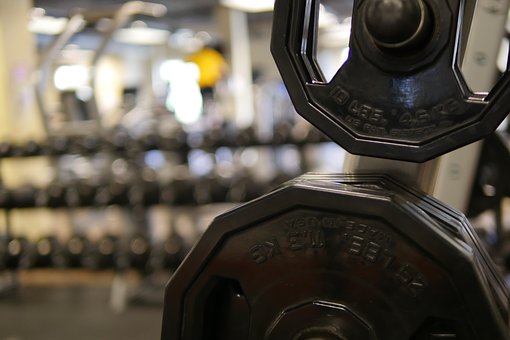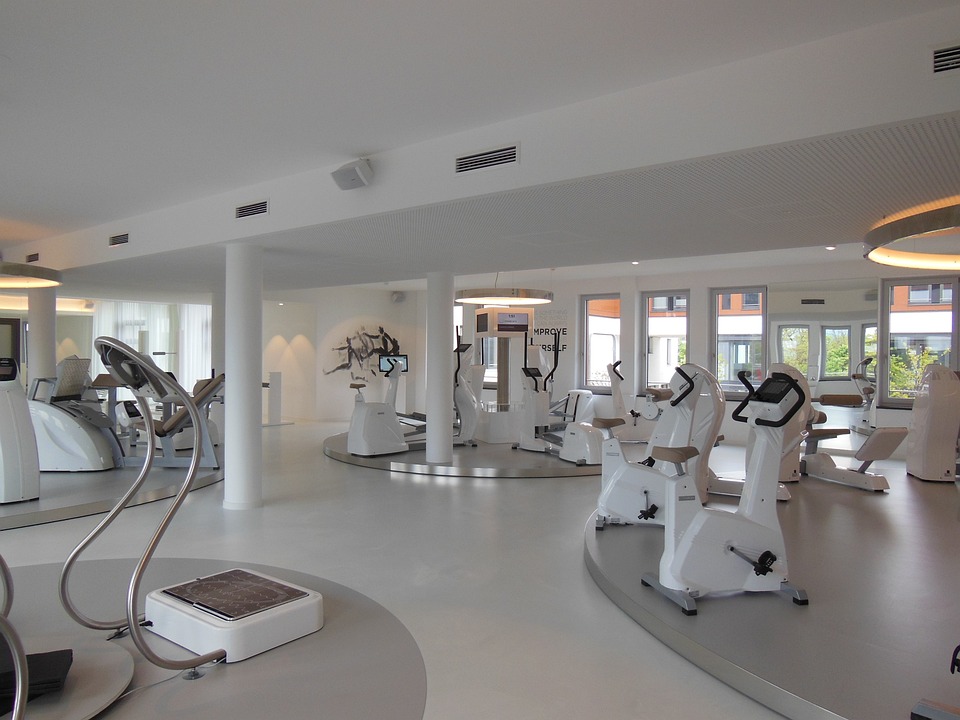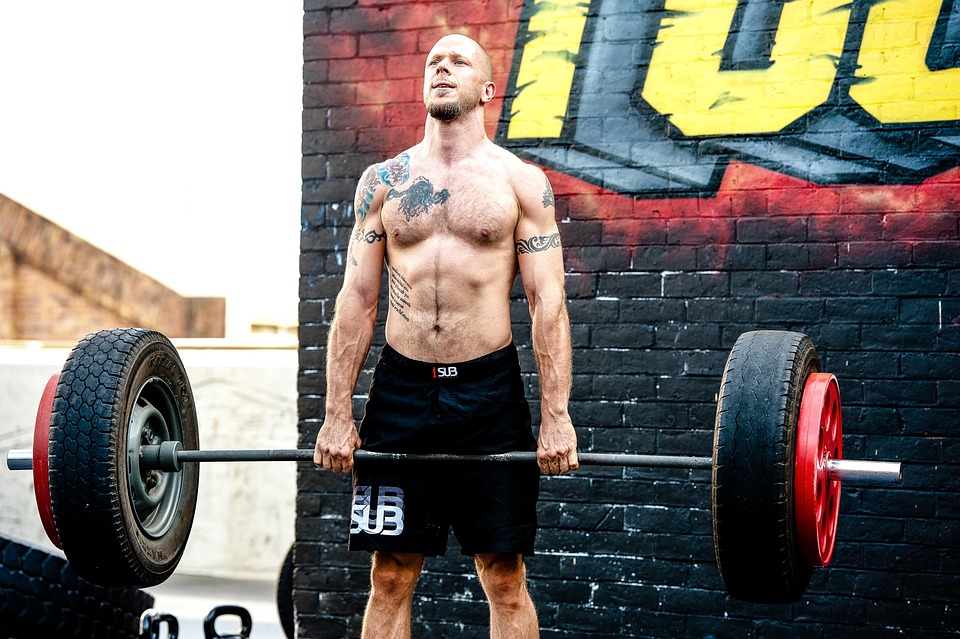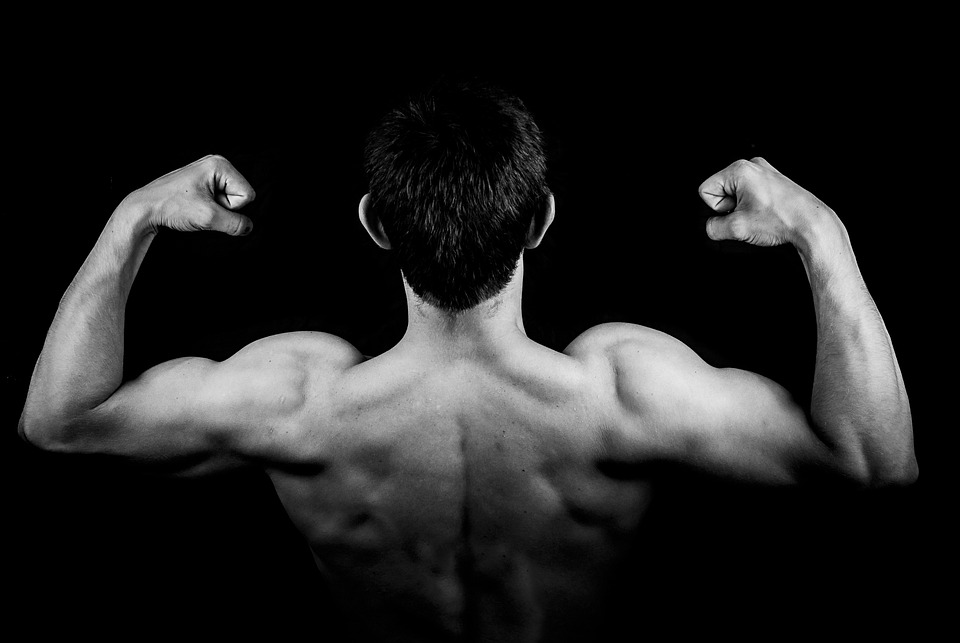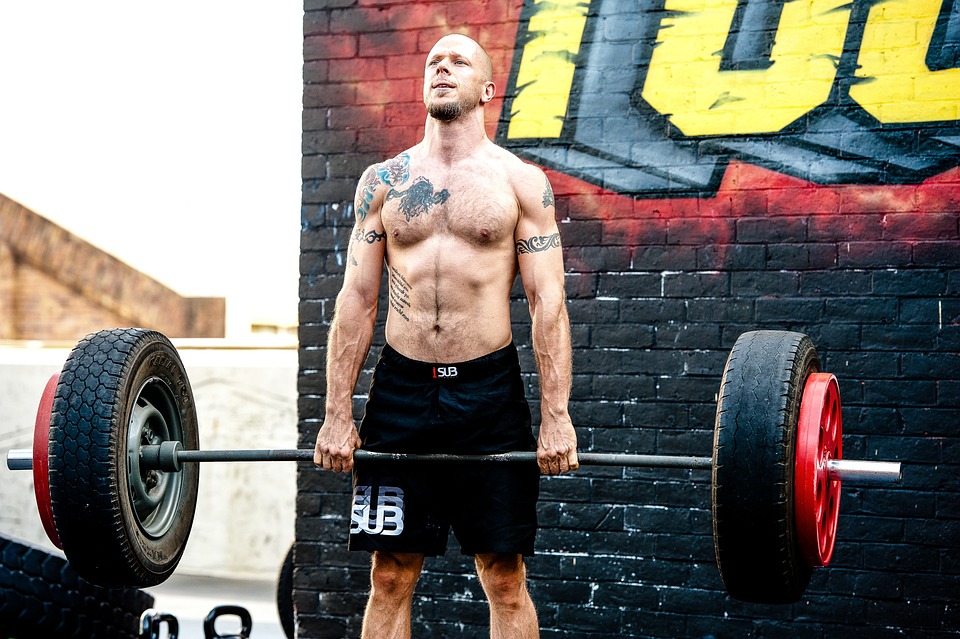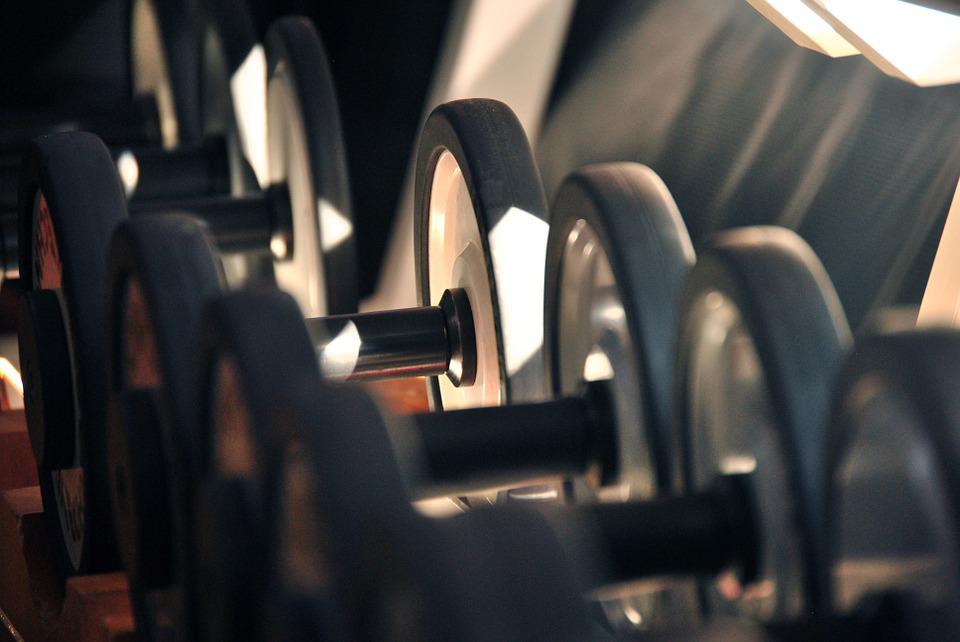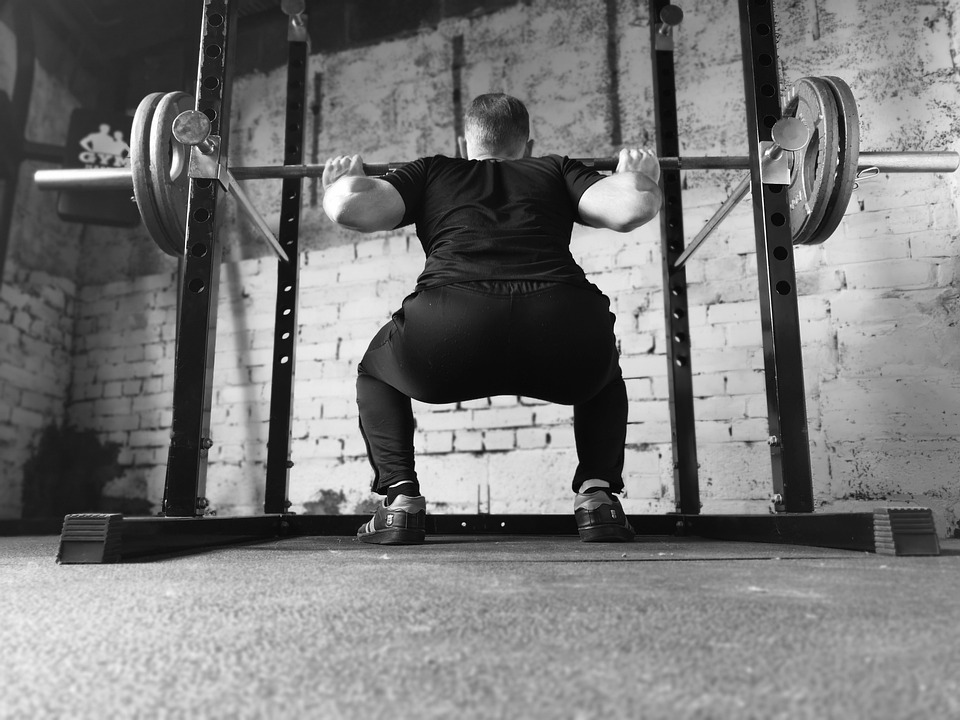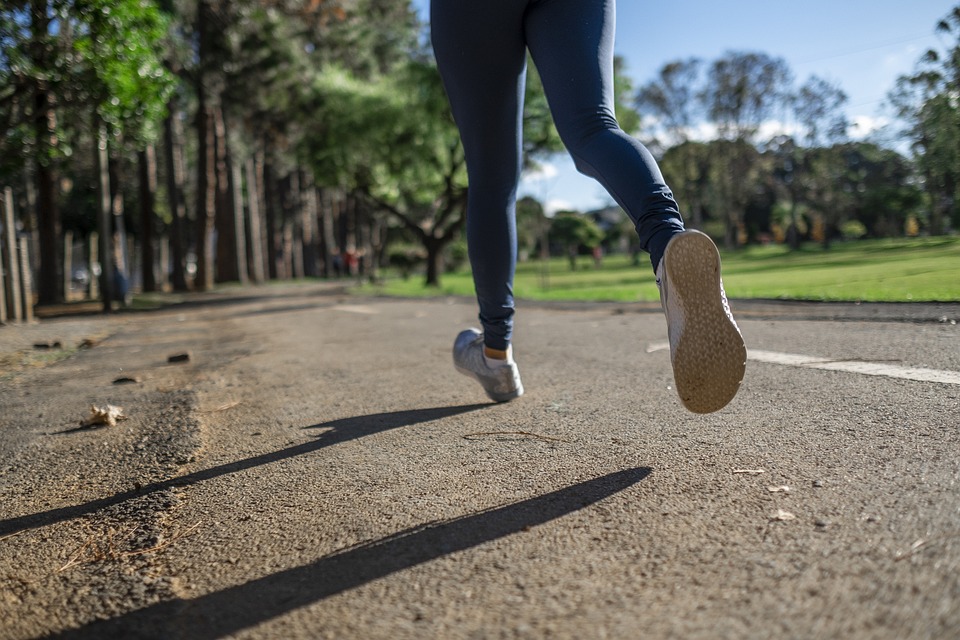Let’s thoroughly go over the trap bar deadlift to get you making major gains!
These are the steps to correctly and safely perform a trap bar deadlift:
Accurately employing the correct form is essential for properly doing the trap bar deadlift in order to avoid any type of injury. Many people tend to disregard the use of proper technique during vigorous compound exercises, consequently leading to injuries like pulled muscles and tears which could have been avoided.
- Obtain a trap bar and load it with the desired weight
- Step into the trap bar and assume a shoulder-width stance with your toes pointing forward
- Ensure that you are standing in the center of trap bar
- From this position squeeze your glutes and begin to lower yourself by bending at the hips first and then the knees
- Grab the handles of the trap bar and ensure that your spine is as neutral/flat as possible
- Keep your arms completely straight and look forward, approximately 6 feet in front of you
- If you are in the correct position, you should feel a gentle stretch along your hamstrings
- Take a deep breath, and hold it in. Begin the pull by driving your feet into the ground until your hips and knees are fully extended
- Squeeze your glutes to stand completely upright
- Do not let the angle of your back change throughout the movement
- Reverse the movement the exact same way you came up, by breaking at the hips first and then at the knees
Muscles Worked by Trap Bar Deadlift
As was said before, the trap-bar or hex-bar deadlift and any type of deadlifting exercise works all of the muscles that make up the back of the body. But it also functions to exercise other muscle groups too. Doing this activity requires a lot of energy, but the growth you will experience through it is unparalleled.
The muscles trained include:
1. Back Muscles
It is important to have a strong back for activities such as walking, posture, bending, and lifting. Furthermore, a well-developed back can be quite impressive in appearance. The area extending from the top of the buttocks to the neck is made up of a diverse set of muscles, so it takes an immense amount of effort and dedication to achieve a formidable back.
Deadlifts are unique in the way that they target the back muscles. Apart from leg muscles being used, the back has to be engaged in order to keep the torso raised through the exercise.
The muscles of the back are particularly emphasized when performing the trap bar deadlift.
2. Legs
The trap bar deadlift primarily works the legs. Quads increase the motion that feature contraction, and the hamstrings and calves ensure steadiness during the motion which features an outward motion.
You need to have solid legs in order to lift a hefty amount of weight since your back muscles alone won’t get the job done. It’s simple.
3. Core
The muscles in the middle of the body are specifically engaged during the exercise of trap bar deadlift. Using the trap bar to perform deadlifts is an excellent way to nurture a powerful, effective core.
Abdominal exercises such as crunches and sit-ups are helpful for certain individuals, yet compound power exercises are the ultimate way to strengthen your core.
4. Hips
Your hip muscles are essential for providing spinal reinforcement, keeping stable, and bending while doing a hip hinge action. The trap bar deadlift is a hip-oriented exercise and gives the lifter an upper hand by making the center of mass closer to the body.
The trap bar deadlift works the hips as a secondary muscle group.
5. Rear Deltoids
The posterior deltoids aren’t typically worked during a deadlift, which is understandable given the mechanics of the exercise.
When performing deadlifts, the rear deltoids and rotator cuff muscles are tense and act as the main stabilizers to hold the shoulder blades in position. The muscles at the back of the shoulders are hit as a side effect while doing the trap bar deadlift.
6. Biceps
When people are looking to build larger biceps, dumbbell curls usually come to mind as the go-to exercise. It can be said that doing hefty exercises during back exercise has a significant effect on the biceps. Deadlifts are an excellent way to increase the mass and strength of your biceps because they force your biceps to be heavily engaged. Make sure to focus on these exercises in order to effectively build those muscles.
The trap bar deadlift works out the biceps as a secondary focus.
7. Forearms
Working just the wrists won’t be enough to build strong forearms; you’ll need to employ more challenging tactics to get the job done. To develop muscular forearms like Popeye’s and enhance your grip strength, you should include static holds and other weight lifting exercises in your regular fitness routine.
The trap bar deadlift works the forearms as a secondary muscle group.
If your grip is not strong, then don’t even think about attempting heavy deadlifts or any workouts that involve similar motions.
Benefits of the Trap Bar Deadlift:
Anyone hoping to increase their strength and gain better muscle function should do trap bar deadlifts. Achieving the best results possible in sports requires efficiency.
Having a single exercise that can provide overall benefit to humans is very beneficial… and that exercise is the deadlift.
- There is a shorter distance between the weight and your axis of rotation (your hips) thus, you are in a more advantageous position to lift the weight
- Less stress on the lower back compared to traditional deadlifts due to the more upright position
- Increased power generation when compared to other deadlift variations (One study shows that it maximizes power output compared to other deadlifts)
- Significantly easier to learn compared to straight bar deadlifts
- Decreases the risk of hyper-extending your back at the top of the movement
- Improves grip strength from a relatively safe position
Common Mistakes
Allowing Your Spine To Round
Never let your spinal alignment change throughout the movement. This is how back injuries occur.
The deadlift targets your back muscles by requiring them to stay in a non-moving state. You are rebuffing movement, thereby building these muscles.
If you are having difficulty sustaining this posture, it is likely you are using an excessive amount of weight.
Lower the weight and work on technique.
Letting Your Knees Cave Inwards
Too much pressure is put on the hips and knees from this. Your knees should be in line with, or slightly beyond, your toes.
Hips Rising Too Quickly
When observing from the side, your chest and hips should ascend simultaneously.
If you see that your posterior is rising up as the bar is still on the ground, you should reduce the amount of weight and practice your form.
- Try starting with your hips a little higher, and
- Focus on driving your feet into the ground and leading with your chest and upper body
Frequently Asked Questions
Are Trap Bar Deadlifts Easier?
The trap bar deadlift is more manageable than the straight bar deadlift.
The load is situated right at your balance point, offering you the best opportunity to pick up the weight.
It’s not uncommon to be able to lift significantly more weight when using a trap bar compared to a straight bar.
Are Trap Bar Deadlifts Safer?
The trap bar deadlift carries the possibility of being less hazardous than the conventional straight bar deadlift.
That is because your lower back can consistently remain in a better orientation.
Moreover, the neutral hold puts less strain on your biceps muscles (an injury that can unfortunately occur if you use a varied hold).
It is important to take into account the correct technique while performing a deadlift in order to avoid any harm or injuries. Also, don’t let your ego get in the way.
The potential for harm rises if you incorporate more weight into this exercise.
Does Trap Bar Deadlift Work Your Back?
The trap bar deadlift works the back muscles by having them remain in a static contraction. You must keep your back in a flat, horizontal line whenever doing any kind of deadlift exercise.
To sustain this stance, your back muscles must stay tightened up to fight any movement.
Nevertheless, you can reduce the effort that your back has to do by altering your beginning position. Maintaining an upright posture puts less strain on your back.
Should I Use High Or Low Handles?
You have two options if you want to do a trap bar deadlift. The bar can be held with the handles pointing upwards (high handle) or you can turn it over with the handles pointing downwards (low handle).
The handle being in a lower position extends the range of motion of the activity, making it more challenging and enhancing your overall strength from the ground.
Having the handle of a machine held at a higher level diminishes how much you can move and facilitates a body stance that is more vertical.
The trap bar deadlift should be conducted with the handles set at a high position first and foremost in order to make the most of the benefits associated with this lift. The low handle option can then be used for switching up the routine for a new experience.
Can Trap Deadlifts Replace Squats?
You will frequently encounter individuals debating the advantages and disadvantages of trap bar deadlifts compared to squats.
Using a trap bar gives you a lot of muscle activation in the quadriceps depending on where you begin.
In my view, trap bar deadlifts should not be used as an alternative to squats. Squats are advantageous because they allow your knees to bend much more than would be possible with deadlifts.
What Sets And Reps Should I Do On The Trap Bar Deadlift?
The trap bar deadlift is an excellent compound activity that produces good results regardless of the set and repetitions you undertake.
Begin by performing 3 rounds of between 7-12 reps each and 4 rounds of 4-6 reps.
What Weight Should I Use In The Trap Bar Deadlift?
Some folks discover that they have the strength to lift more than the usual weight they can handle on a typical deadlift with a straight bar.
Begin gradually and concentrate on performing the exercise correctly before increasing the load to the maximum amount.
Trap Bar Deadlift Alternatives to Target the Posterior Chain
Wrapping Up
We hope that you have obtained all the essential knowledge regarding the trap bar deadlift! This is an alteration of the traditional deadlift which provides the same advantages plus more, like making it less stressful for the spine and guarding the lower back from potential harm or pain.
Using the trap bar deadlift is a very useful exercise, which a lot of people tend to overlook. If you choose not to use this move, then you’re missing out on a lot of potential growth.
It is not worth the risk of a harm for several weight-trainees to attempt a typical deadlift, and in this experience, adapting can be a smart move. Don’t object just yet – it doesn’t necessarily mean forsaking typical deadlifts, but trap bar deadlifts are an outstanding full-body exercise you should consider adding to your routine if you really want to get significant results!
